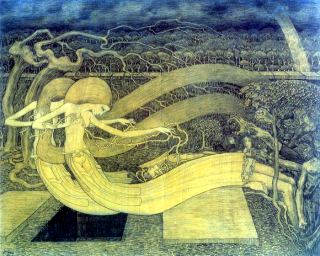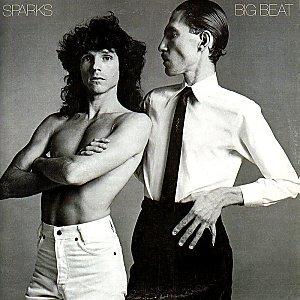
A fairy is a type of mythical being or legendary creature in European folklore, a form of spirit, often described as metaphysical, supernatural, or preternatural.

Loretta Lynn is an American country music singer-songwriter with multiple gold albums in a career spanning almost 60 years. She is famous for hits such as "You Ain't Woman Enough ", "Don't Come Home A-Drinkin' ", "One's on the Way", "Fist City", and "Coal Miner's Daughter" along with the 1980 biographical film of the same name.
Spirit is the non-corporeal essence of a being or entity.

In Latin American folklore, La Llorona is one of the most famous oral legends. The lore states a woman was abandoned by her husband and was left alone to raise her two sons, whom she instead drowned in a river out of grief and anger. As a result of her actions the woman is condemned to wander for all eternity until she finds the bodies of her children, often causing misfortune to those who are near or hear her. The oral story represents La Llorona as a person, legend, ghost, goddess, metaphor and symbol.
Baba Marta is the name of a mythical figure who brings with her the end of the cold winter and the beginning of the spring. Her holiday of the same name is celebrated in Bulgaria on March 1 with the exchange and wearing of martenitsi. Baba Marta folklore is also present in southern and eastern Serbia where it is a reference as to a freezing weather change after a spring break. The Romanian holiday Mărţişor is related to Baba Marta.

In Dutch mythology and legends, the Witte Wieven are spirits of "wise women". The mythology dates back at least to the pre-Christian era and was known in the present-day regions of the Netherlands, Belgium and parts of France. In some places they were known as Juffers or Joffers ("ladies"), or as Dames Blanches in French.

"That Lady" is a 1973 R&B and soul song by The Isley Brothers, released on their T-Neck imprint. It was originally performed by the group nearly a decade before in 1964 inspired by The Impressions. After signing with Epic Records in 1973, the eldest members of the group had included younger members, guitarist Ernie Isley, bassist Marvin Isley and keyboardist/pianist Chris Jasper, as official members. In a response to this transformation, the group gave themselves the moniker of 3 + 3, describing the three original vocalists in the group and three recruited instrumentalists, inspiring the title of the album that came out that year. They performed the song on Soul Train on September 22, 1973.
The Woman in White may refer to:
A white witch is a believer and user of witchcraft who subscribes to a belief that witchcraft is not inherently evil and tries themselves not to be evil. White magic and practitioners are often associated with healing and nature.

A White Lady is a type of female ghost, dressed in all white reportedly seen in rural areas and associated with some local legend of tragedy. While White Lady legends are found in many countries around the world, they are most prominent in parts of the United States, Ireland and Great Britain. Common to many of these legends is the theme of loss of a daughter, husband or father and a sense of purity before death

In German folklore, the Weiße Frauen are elven-like spirits that may have derived from Germanic paganism in the form of legends of light elves. The Dutch Witte Wieven went at least as far back as the 7th century, and their mistranslation as White Women instead of the original Wise Women can be explained by the Dutch word wit also meaning white. They are described as beautiful and enchanted creatures who appear at noon and can be seen sitting in the sunshine brushing their hair or bathing in a brook. They may be guarding treasure or haunting castles. They entreat mortals to break their spell, but this is always unsuccessful. The mythology dates back at least to the Middle Ages and was known in the present-day area of Germany.
Dame Blanche may refer to:
In Indonesian mythology, a sundel bolong is a mythical ghost from the archipelago which is a woman with beautiful long hair and a long white dress. The myth is closely linked to prostitutes, meaning a "prostitute with a hole in her", in reference to the large hole which is said to appear in her back.

Thai folklore is a diverse set of mythology and traditional beliefs held by the Thai people. Most Thai folklore has a regional background for it originated in rural Thailand. With the passing of time, and through the influence of the media, large parts of Thai folklore have become interwoven with the wider popular Thai culture.

In mythology and folklore, a vengeful ghost or vengeful spirit is said to be the spirit of a dead person who returns from the afterlife to seek revenge for a cruel, unnatural or unjust death. In certain cultures where funeral and burial or cremation ceremonies are important, such vengeful spirits may also be considered as unhappy ghosts of individuals who have not been given a proper funeral.
This page is based on this
Wikipedia article Text is available under the
CC BY-SA 4.0 license; additional terms may apply.
Images, videos and audio are available under their respective licenses.











